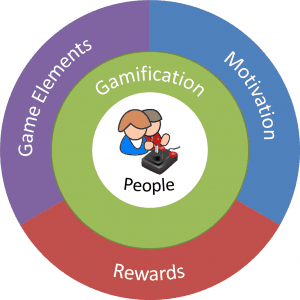Trending
Opinion: How will Project 2025 impact game developers?
The Heritage Foundation's manifesto for the possible next administration could do great harm to many, including large portions of the game development community.
At its heart, is gamification Pervasive User Centric Design? Is it the cross over between real and virtual worlds?

A spelling mistake, auto-correct and a lack of concentration led me to researching totally the wrong thing recently. I was looking into a blog on Persuasive design, but ended up looking at articles on Pervasive design by mistake! It triggered some ideas and things I had been thinking about a while back, so I ran with it and am glad I did.

Gamification: Pervasive User Centric Design
Standard Game
A few years ago, I remember reading about Pervasive Games. The difference between a pervasive game and a “normal” game is that the pervasive game breaks the magic circle and integrates in some way with the players real life and world. You may remember I wrote about the magic circle a while back. This is essentially the barrier between the virtual world and the real world that most games don’t tend to cross.
Pervasive games break this boundary.

Gamification: Pervasive User Centric Design
Pervasive Game
A great example of this is Google’s popular Ingress. This is a location based game, where you have to physically be in specific locations in order to play the game. So whilst the game continuum is within the virtual world – it is played out in the real world.
Of course, this is exactly how at least one popular form of gamification works – fitness apps like Zombies Run or FitBit. Whilst the data collection and feedback happen in the application, the actual activity occurs in the real world. In fact, if you look at almost all gamification could be considered pervasive design.
If we consider work as the real world and gamification as the virtual world, gamification is constantly crossing the barrier into work. You have to do real work to progress in the gamified system. In education, you have to learn and achieve to progress in the gamified system. You have to succeed in the real world to succeed in the virtual world!
The second thing that had me thinking was the idea that this is extremely user centric in its approach – i.e. the user is at the centre of the design decisions and the experience. If it is not about them it just will never work!

Gamification: Pervasive User Centric Design
Pervasive User Centric
So you could say that gamification is Pervasive User Centric Design! This is what I will tell the next company to talk about if I can’t convince them just to use gamification!
Originally published on my blog: http://www.gamified.co.uk/2014/09/11/pervasive-user-centric-design
Read more about:
BlogsYou May Also Like